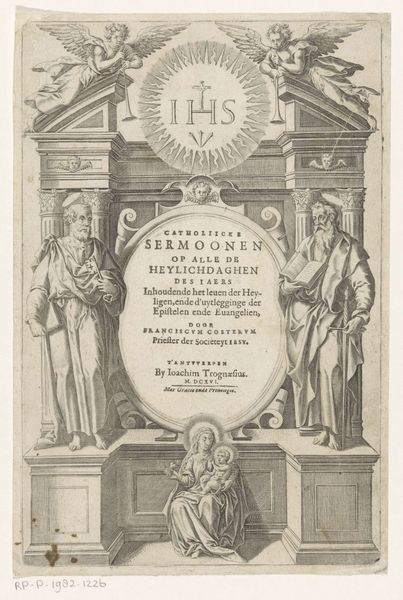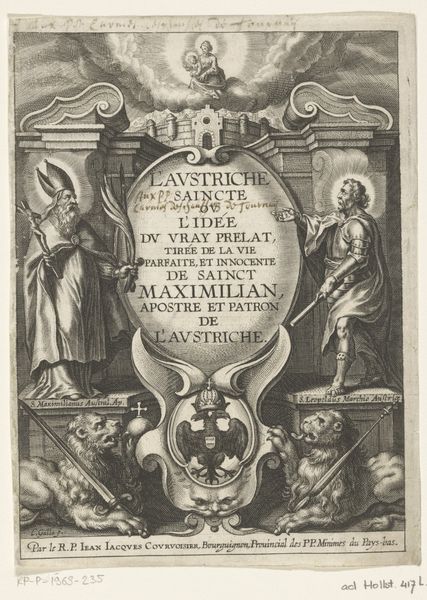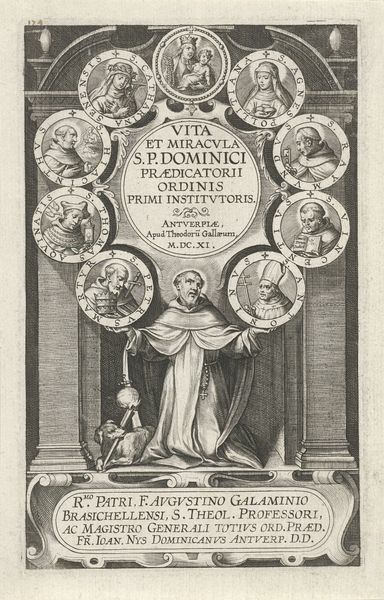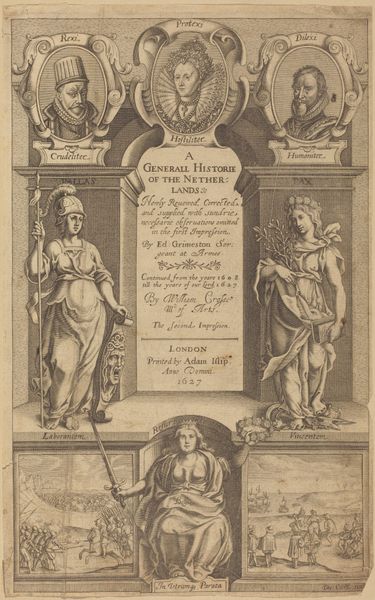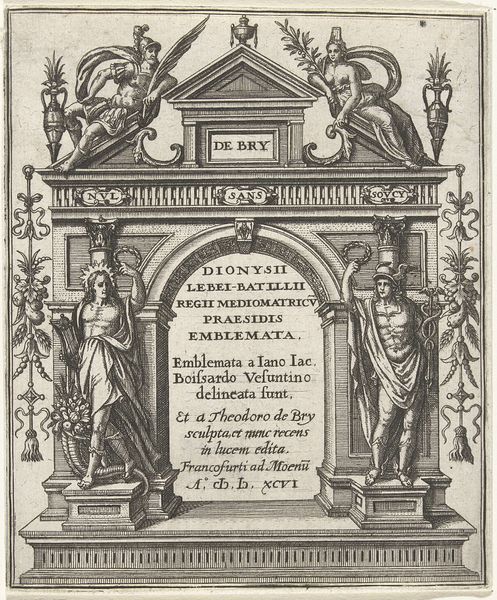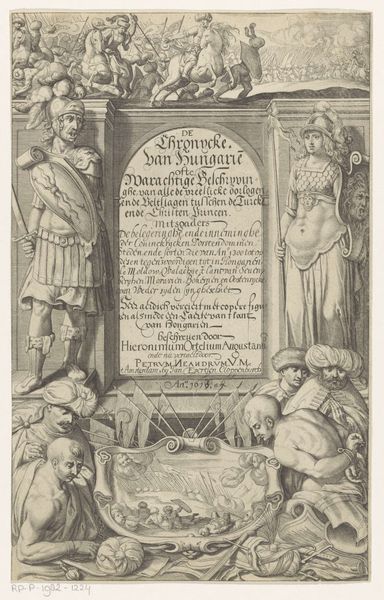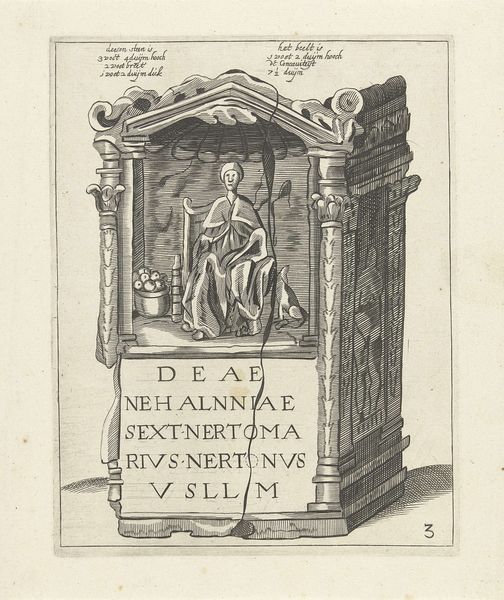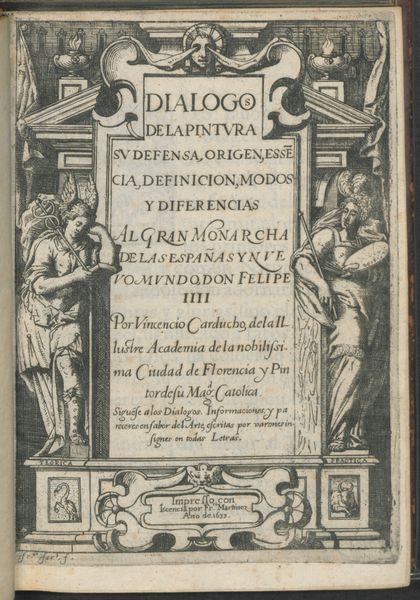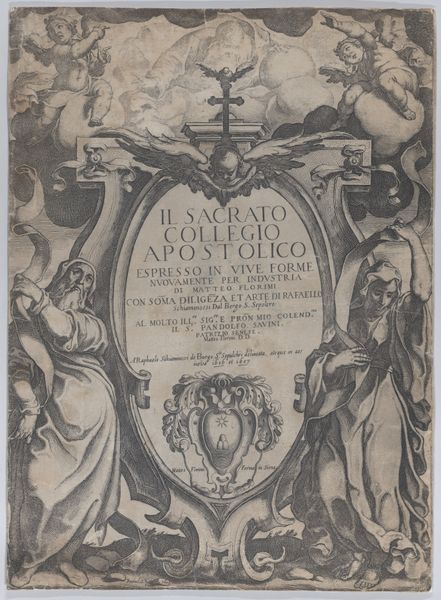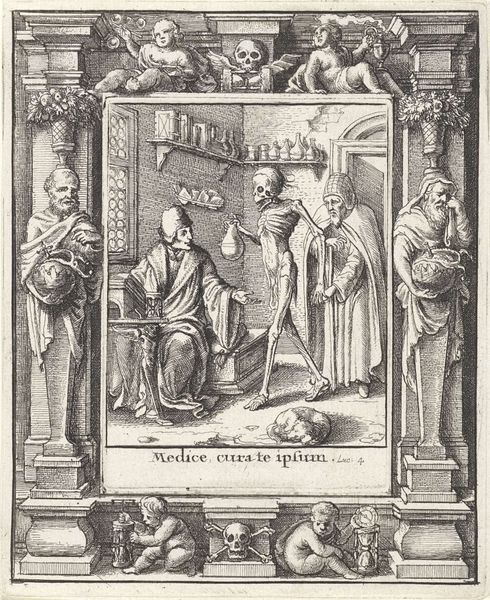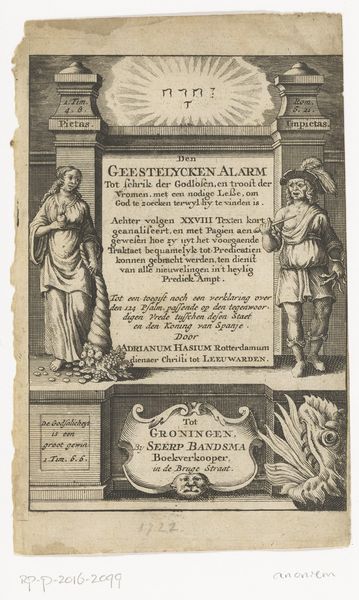
Frontispiece: a monument decorated with the Medici coat of arms at top in center, flames at top to either side, a hooded figure on right side of monument with a weasel below, a figure to left side wearing a papal crown, a scene of a monk chasing away demons with a cross on base of monument, from 'Frontispiece and four scenes from the life of Saint John Gualbert' (Frontispice et quatre vignettes pour une vie de Saint Jean Gualbert) 1640
0:00
0:00
drawing, print, engraving
#
portrait
#
drawing
#
baroque
# print
#
figuration
#
history-painting
#
engraving
Dimensions: Sheet: 7 5/8 x 5 7/16 in. (19.4 x 13.8 cm) Mount: 8 1/8 x 6 in. (20.7 x 15.3 cm)
Copyright: Public Domain
Curator: What strikes me immediately about this piece is the sheer busyness of it all. My eyes dart all over, trying to make sense of the figures, the flames, the text… it feels almost chaotic, like a dream. Editor: Well, that chaos serves a purpose. What we're looking at is the "Frontispiece" created around 1640 by Stefano della Bella, now held at the Metropolitan Museum. It's an engraving, intended to serve as the introductory page for a biography. Note how the monument is adorned with the Medici coat of arms, giving you some clues about patronage and audience. Curator: The Medici! Ah, now the flames at the top make more sense—a bit of pyrotechnic heraldry, perhaps? But what about the hooded figure and that… is that a weasel down below? Editor: Those details add to the narrative. Look closer and you’ll observe that hooded figure on the right with the weasel and the papal crowned figure on the left. Further at the base, we have the scenes depicting a monk chasing demons with a cross. All carefully rendered using etching techniques, suggesting skilled artisanship and careful planning of the image. Curator: So, a showcase of technique *and* political alliances then? I suppose in the Baroque period those weren't mutually exclusive pursuits. The intense detail suggests labor and expense… almost like a visual announcement of the patron’s status, wouldn’t you say? Editor: Precisely. It highlights the labor invested not only in its production but also in commissioning and disseminating the printed book. It also encourages us to see prints less as transparent copies and more as carriers of information and ideology. Curator: It's funny. Even with all its overt symbolism and formal construction, it still manages to convey something intensely personal—the kind of conviction you only get when someone deeply believes in the story they're telling. Almost regardless of politics. Editor: Perhaps the intense personal connection lies not only in religious and patron belief, but with the artisan who skillfully transferred meaning onto the material; revealing some of the emotional labor that helped shape the final print. Curator: Well, I leave with a renewed appreciation for both, the overt messages, as well as, the hands of those who produced the piece, after all!
Comments
No comments
Be the first to comment and join the conversation on the ultimate creative platform.
